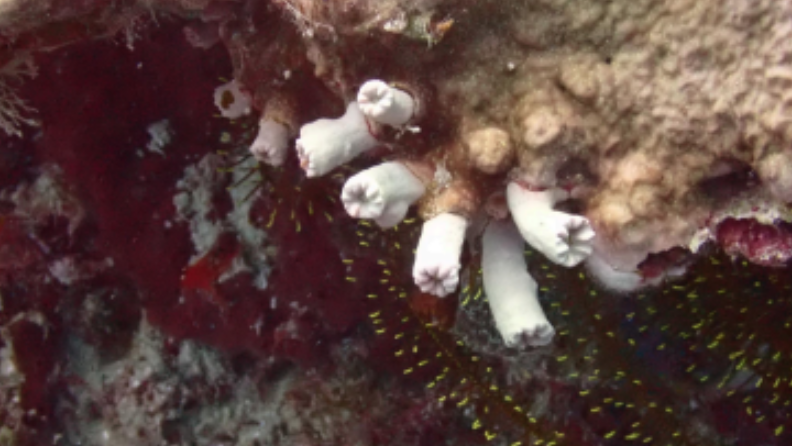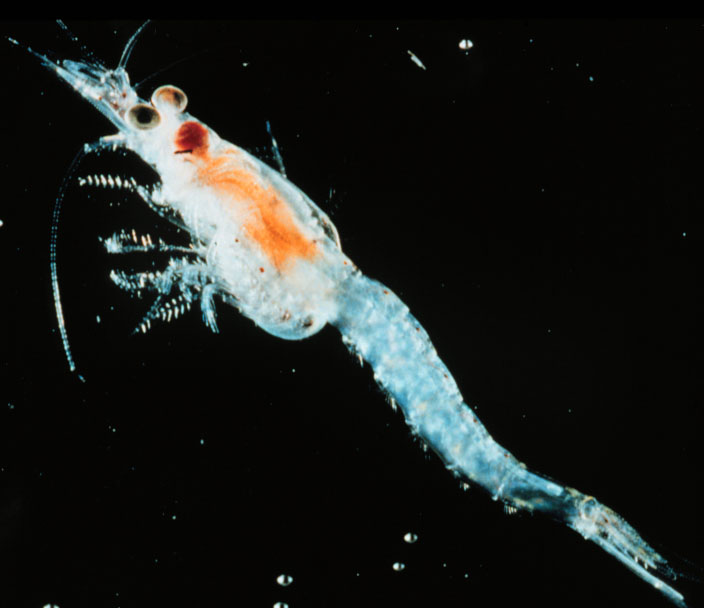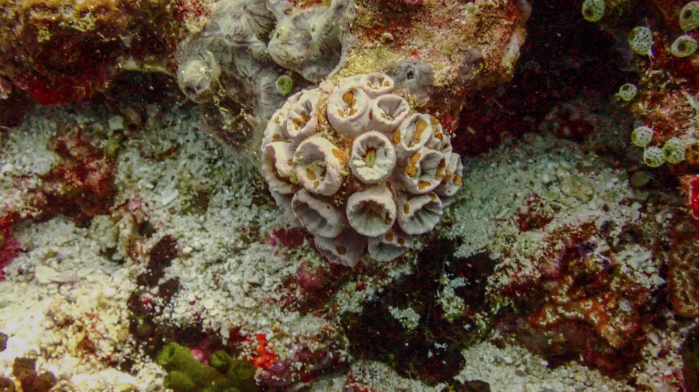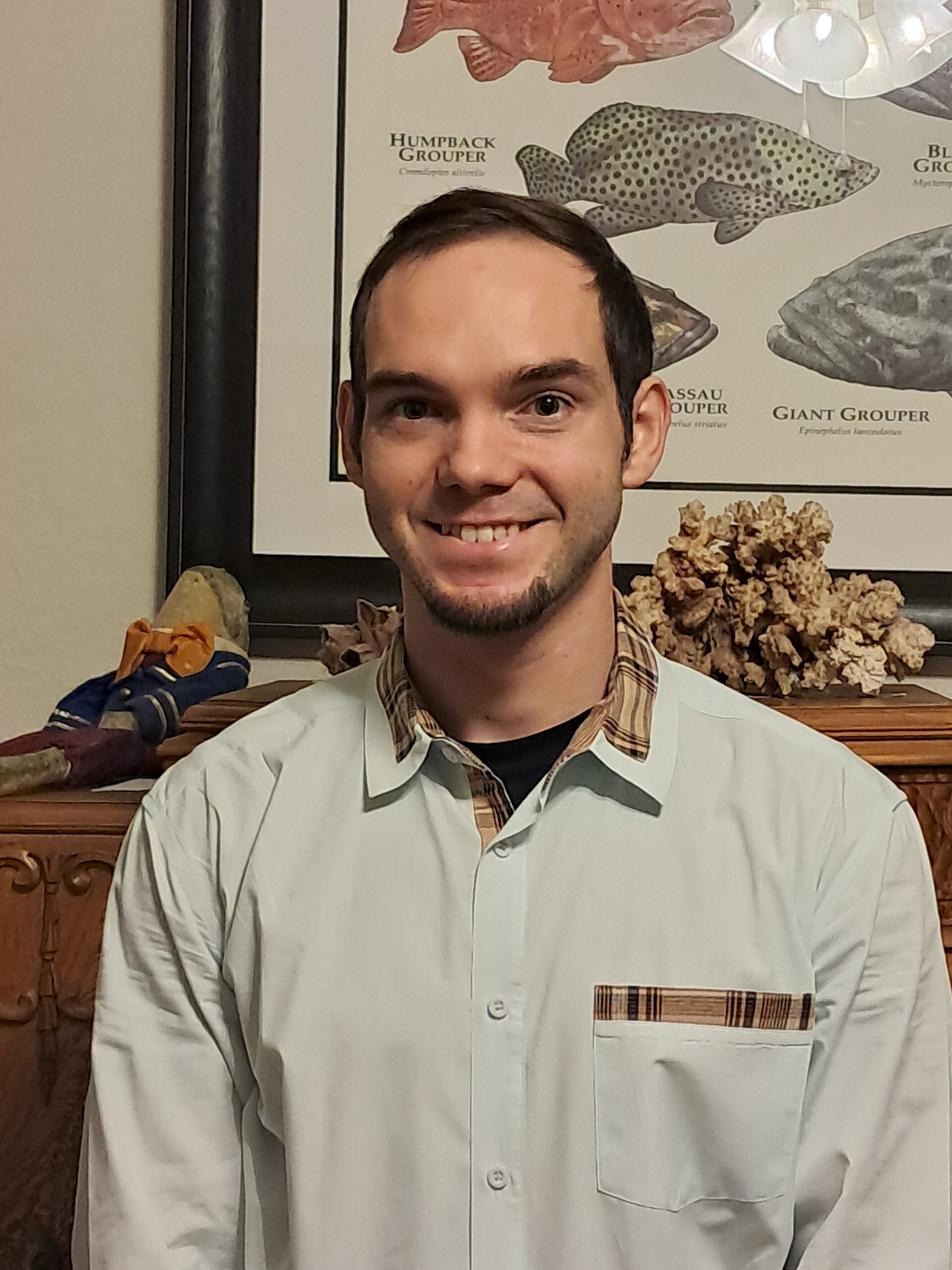Though the overwhelming majority of articles intended to be applied as guidelines for marine aquarists are based on anecdotes and present personal, undocumented evidence as husbandry guidelines and recommendations, an explanation as to ‘why’ a technique or practice works is often lacking.
While the success stories and experimental methods of veteran hobbyists can be very helpful, professional, peer-reviewed research, such as that presented here, fills remaining knowledge gaps and can be trusted to be absent of bias or exaggerations.
For those who are willing to commit themselves to the tedious husbandry requirements of the long-term maintenance of dendrophyllid species demand, there’s good news. Researchers studying the behavioral responses and contribution to nutrition through feeding various zooplankton species have determined an optimal diet for maintaining health in captivity.
Presented herein with additional research is a collection of studies that unravel the many variables that affect livelihood in aquaria.

A Brief Overview of the Family
Corals classified within Family Dendrophyllidae are, indeed, quite unique scleractinians in many ways. Some species possess delightfully unique characteristics such as the “Walking Dendro” (Heteropsammia cochlea) which possesses mobility due to a symbiotic relationship with a sipunculid (peanut worm).
In contrast to the majority of hermatypic reef-dwelling corals, the vast majority of species lack zooxanthellae and instead rely primarily upon the capture of zooplankton and other prey to meet their nutritional requirements. While some species do occur on reefs, such as Tubastreae micranthus (the Black Sun Coral), most are adapted to life in colder water far below the warm reefs, thriving in the absence of sunlight.
Survival without the dependence on zooxanthellae for nutrition is a fascinating adaptation, but even more interesting, and lesser known, is that members of the family contribute to the formation of biodiversity hotspots in the deep sea, far different from the barren landscape commonly imagined when most visualize the seascape below the photic zone.

Image Credit: Malcolm Levison
The most commonly available dendrophyllid species belong to either the Tubastreae or Dendrophyllia genus, though there are others that find their way into the aquarium trade on rare occasions. As azooxanthellate corals, their husbandry in captivity can be highly demanding due to their requirement for copious amounts of zooplankton, the majority of which must be offered by hand on a daily basis.
Understanding this generally deters most hobbyists from attempting to maintain these species. Though the rate of decline and quantity of food required is dependent on the species in question, these corals will show signs of tissue recession until mortality is inevitable in the absence of a frequent feeding regimen consisting of a suitable food source.
Because of the high reliance on the capture of prey to fuel all life functions, some species have evolved an appetite so voracious that even daily feedings are unable to meet their nutritional requirements. To gain further insight into the feeding biology, behavior, and effects physical parameters may have on these corals, a brief review of recent research can be an invaluable tool.

Presentation of Research
Due to threats posed by climate change and anthropogenic activities, cold water reefs inhabited by dendrophyllid corals such as members of the Dendrophyllia genus are now in need of restoration.
Techniques similar to those utilized for the restoration of tropical reefs involving growing nubbins in ex-situ conditions prior to transplanting them onto the reef have recently been employed for coldwater coral reefs.
However, due to the need for zooplankton for growth, unlike tropical corals, researchers in Italy have recently investigated the effects of different zooplankton species fed to Desmophyllum pertusum, Madrepora oculata, and Dendrophyllia cornigera, in an effort to identify the optimal food source and feeding regimen while housed in captivity.
Through the collection and assessment of qualitative data from stable isotope analysis and prey-capture rates, the optimal food source (four foods were included in the study) was able to be determined. Qualitative data was also gathered through observations of behavioral responses during feeding and reactions to other abiotic factors such as light while in captivity.

Feeding Biology and Prey Preferences
Because researchers must take great care in ensuring the zooplanktivorous prey closely resembles food sources present in the natural environment, four foods that simulated a broad range of potential prey were offered.
Included in the study were nauplii of Artemia salina, the algal species Tetraselmis subcordiformis, Brachionus plicatillis and B. rotundiformis (two rotifer species), and Mysis relicta.
The feeding method involved the mixture and addition of phytoplankton and each zooplanktivorous food source to each aquarium at a frequency of twice a week over a 30 day period for D. pertusum and M. oculata and three times per week for D. cornigera.
Seawater was then vigorously mixed and samples were later taken and analyzed to assess prey-capture rates. Results appear to indicate that the suitability of prey is partly dependent upon the diameter of polyps, with the polyps of M. oculata being smallest (diameter = 5-10 millimeters). This offers a clear explanation as to why this species captured A. salina at a greater rate than other species.

However, because the raw results don’t necessarily indicate ingestion or assimilation, stable isotope analysis was used to determine which food source should be considered optimal. Following analysis, it was determined that all three coral species ultimately preferred M. relicta and to a lesser extent, A. salina (Da Ros et al., 2022).
It should also be noted that particulate organic matter (POM), and even dissolved organic matter (DOM) are known to be assimilated by at least a portion of species. This source of nutrition aids greatly in meeting the coral’s nutritional requirements, indicating flexibility in diet (Mueller et al., 2014). This is a critically important adaptation for deep-water species as the ability to sequester POM and DOM enable species to survive during periods of low food availability.
Due to the importance of this source of food and the requirement for the research to imitate the corals’ native habitat, the primary study presented here used natural seawater sourced from depths at which these corals are naturally found to fill each aquarium in order to obtain accurate results from the feeding of each food source.
Though this is rarely replicable for the typical hobbyist, it lends insight into the great divide between the natural habitat in which they thrive and the typical home aquarium, nevertheless, and aids in understanding why many species require food in such copious quantities.

Effects of Abiotic Factors
Though many of these corals are primarily found below the photic zone, with some species serving as exceptions, dwelling on both sunlit reefs and in the depths below, they are largely indifferent to the presence of light but naturally feed in darkness which is why they are most commonly viewed with polyps retracted.
However, a feeding response can be elicited upon detection of food and azooxanthellate corals can be trained to extend their polyps for feeding under light. Depending on the depth at which a specimen was collected, acclimation must be taken into consideration and the time required to elicit such a feeding response can vary.
Because species of various genera may have been collected from cold-water reefs, the dramatic difference in temperature can shock the coral, subsequently lengthening the time required for full polyp extension. This is generally not life threatening, however, and since many deepwater species experience low food availability seasonally, should not be highly concerning.
Patience and regular attempts to feed the coral should lead to polyp extension and initially offering food in darkness may help encourage feeding in less time due to the more natural conditions.
Physical Parameters of Importance
Within their natural habitat, strong currents are relied upon to deliver zooplankton and phytoplankton to azooxanthellate corals, much of which is delivered from the reefs above. These currents are generally strong and constant which ensures the presence of a constant supply of food.
It has been well established that flow velocity, in particular, can have significant effects on the capture of prey, with the magnitude of the effect showing species-specificity. In one study, for example, it was determined that the capture rates of macro-zooplankton and strong flow had a significant positive correlation while studying Dendrophyllia cornigera.
Temperatures of 8°, 12°, and 16° Celsius did not significantly affect the capture of either meso or macro-zooplankton but it was noted that differences in temperature may have still disrupted biological functions which weren’t measured (Gori et al., 2015). Conversely, another study conducted 5 years prior revealed that Lophelia pertusa (now classified as Desmophyllum pertusa) captures zooplankton at a greater rate under slower flow velocity (Purser et al., 2010).
Water temperature and pH of seawater are also believed to be important parameters. Not only can lower pH values and above average temperatures decrease rates of calcification in these already slow growing species and lead to an increase in food demand due to an increased metabolism, sensitivity to other environmental stress factors can also be amplified (Da Ros et al., 2022).
Additionally, unnaturally rapid increases in water temperature affect the microbiome of the coral, decreasing immunity and potentially interfering with the acquisition of nutrients (Maier et al., 2023). This presents a particularly difficult obstacle to overcome and can serve as an indication that the rarely available cold-water dwelling species (which may occur either at deeper depths or higher longitudes) are not good choices for long-term captive environments.
Guidelines Extrapolated From Research
While the rarity of these species may tempt many to add a dendrophyllid coral species to their aquariums, research has made it clear that the importance of possessing a firm understanding of the species and ensuring it’s fed frequently cannot be overstated.
As mentioned previously, because most species are naturally bathed in a practically constant supply of food, coupled with the fact that warmer temperatures raise metabolic rates, some deepwater species that thrive in temperatures far below those of typical aquaria simply require too much food unless the aquarium is designed specifically to meet their uncommon nutritional requirements.
Other species, however, such as some members of the Tubastreae genus, differ and are relatively easy to maintain with the frequent spot-feeding of the zooplankton species mentioned above able to supply a suitable source of nutrition. This is because they are commonly collected from tropical reefs and therefore experience the same temperatures as other tropical corals.
It must be noted that the omnipresent “care level” tag attached to corals as “easy”, “moderate”, or “expert” level serves as a poor and sometimes misleading guideline as it offers no information.
The difficulty associated with maintaining many azooxanthellate corals or others is generally dependent not only on the species in question but whether the coral is housed in conditions that imitate their natural habitat as well as the devotion of each individual hobbyist.
For some scleractinian dendrophyllids, this implies the willingness to frequently feed each polyp in order to ensure their nutritional requirements are met. Maintaining many non-photosynthetic corals that can be found on reefs is a task that can be accomplished by the majority of aquarists willing to allocate the time required for identification of species, research of their natural habitat, and establishment of a regular feeding regimen.
These corals that seem to “shun the sun” are species that will never be self-sustaining in aquaria, regardless of design or method. Their tedious requirements of cold-water species surpass what many are realistically able to provide. However, species most commonly available and well-known tend to present less difficulty, and, beyond feeding, can easily be maintained. (See tables below.)
For this reason, species sourced from cold water reefs are generally only advisable for the most highly dedicated hobbyists and those with systems designed specifically to meet their needs. With that said, by exercising caution before making a purchase, taking to heart the research reviewed here, and applying similar methods, the odds of experiencing success are greatly increased.
A Brief List of Common Species in the Aquarium Trade
Genus Tubastreae
| Scientific and Common Name | Suitability for Aquaria Natural Depth of Occurrence |
| T. micranthus (Black Sun Coral) | Rarely Suitable Due to Feeding Requirements. Wide Range of Depths Including Sunlit Reefs |
| T. aurea (Common Sun Coral) | Suitable With Regular Feeding. Shallow Depths, Occurs on Tropical Reefs |
| T. faulkneri | Suitable With Regular Feeding Shallow Depths, Occurs on Tropical Reefs |
Genus Dendrophyllia
| Scientific and Common Name | Suitability for Aquaria Natural Depth of Occurrence |
| D. fistula (Fat-Head Dendro) | Suitable With Caution in Light of 89-910 MetersAbove Research |
| D. ramea | Less Suitable. (Natural 20-150 Meters temperatures seldom rise above 16?.) |
Other Species
| Scientific and Common Name | Suitability for Aquaria Natural Depth of Occurrence |
| Heteropsammia cochlea (Walking Dendro) | Suitable With Regular Feeding 6-283 Metersand Care for Symbiont |
| Rhizopsommia verilli | Suitability Unknown 2-38 Meters |
| Duncanopsammia axifuga (Duncan) | Suitable With Feeding Shallow Reefs – 200 Meters |

“fist-shaped” colonies such as Tubastraea coccinea (Orange Cup Coral).
Image Credit: Malcolm Levison
References
Da Ros, Z., Dell’Anno, A., Fanelli, E., Angeletti, L., Taviani, M., & Danovaro, R. (2022). Food preferences of Mediterranean cold-water corals in captivity. Frontiers in Marine Science, 9. https://doi.org/10.3389/fmars.2022.867656
Gori, A., Reynaud, S., Orejas, C., & Ferrier-Pagès, C. (2015). The influence of flow velocity and temperature on zooplankton capture rates by the cold-water coral dendrophyllia cornigera. Journal of Experimental Marine Biology and Ecology, 466, 92–97. https://doi.org/10.1016/j.jembe.2015.02.004
Maier, S. R., Brooke, S., De Clippele, L. H., de Froe, E., van der Kaaden, A., Kutti, T., Mienis, F., & van Oevelen, D. (2023). On the paradox of thriving cold?water coral reefs in the food?Limited Deep Sea. Biological Reviews, 98(5), 1768–1795. https://doi.org/10.1111/brv.12976
Mueller, C. E., Larsson, A. I., Veuger, B., Middelburg, J. J., & van Oevelen, D. (2014). Opportunistic feeding on various organic food sources by the cold-water coral <i>lophelia pertusa</i> Biogeosciences, 11(1), 123–133. https://doi.org/10.5194/bg-11-123-2014
Purser, A., Larsson, A. I., Thomsen, L., & van Oevelen, D. (2010). The influence of flow velocity and food concentration on Lophelia pertusa (Scleractinia) zooplankton capture rates. Journal of Experimental Marine Biology and Ecology, 395(1–2), 55–62. https://doi.org/10.1016/j.jembe.2010.08.013
About the author
Malcolm Gray Levison is an avid diver, reef-keeping hobbyist, and dive photographer who takes great joy in sharing his experiences with others through his writing.
He also possesses a true passion for studying the biology and ecology of coral reefs and desires to contribute to the conservation of these fragile ecosystems.



